Affiliate disclosure: This post may contain affiliate links. Please see our Privacy Policy.
Purslane is a common edible wild weed that’s absolutely delicious. It’s actually cultivated in many parts of the world, and it features prominently in a number of traditional recipes. If that’s not enough, it’s also medicinal!
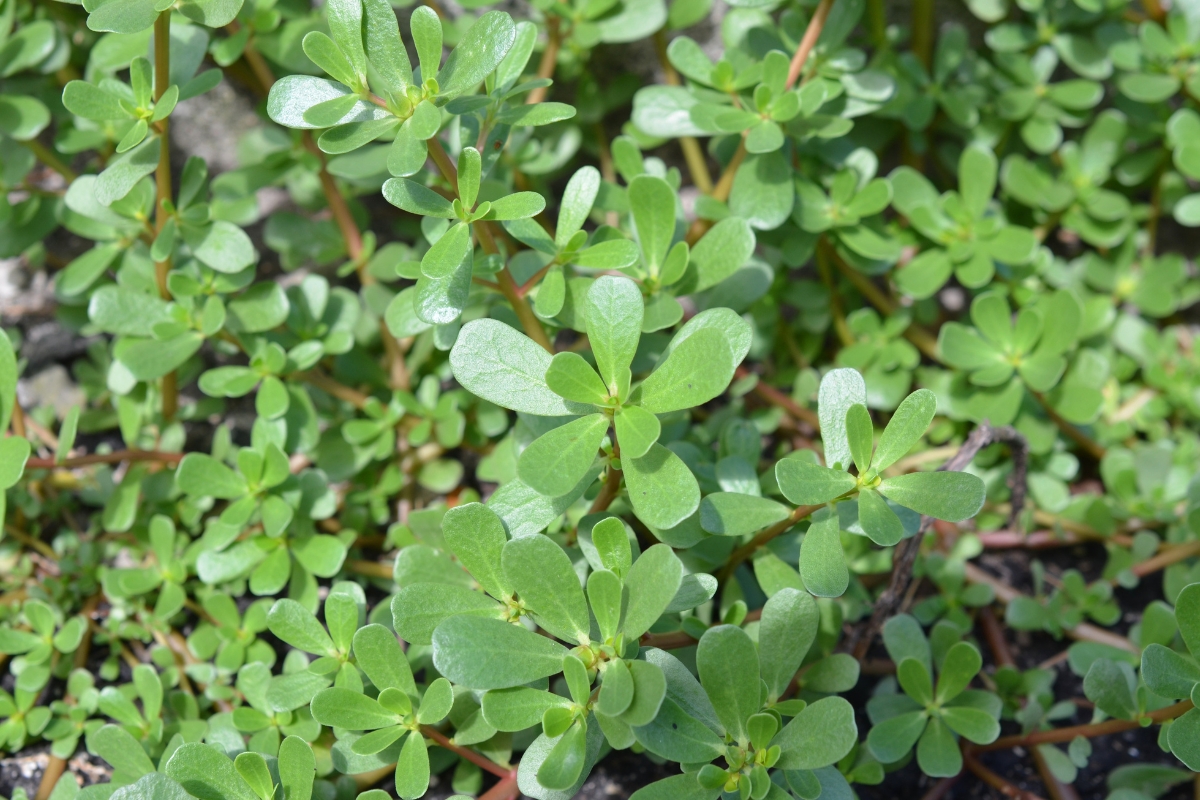
Growing up in the dessert, this sweet wild succulent would carpet the sandy soils in our backyard. You could step on it just about anywhere, creeping along the ground, thriving in drought and waiting to fill it’s soft juicy leaves with the next drought.
Purslane is actually a common edible green that’s cultivated in many countries, but you can pick it for free if you know how to spot it!
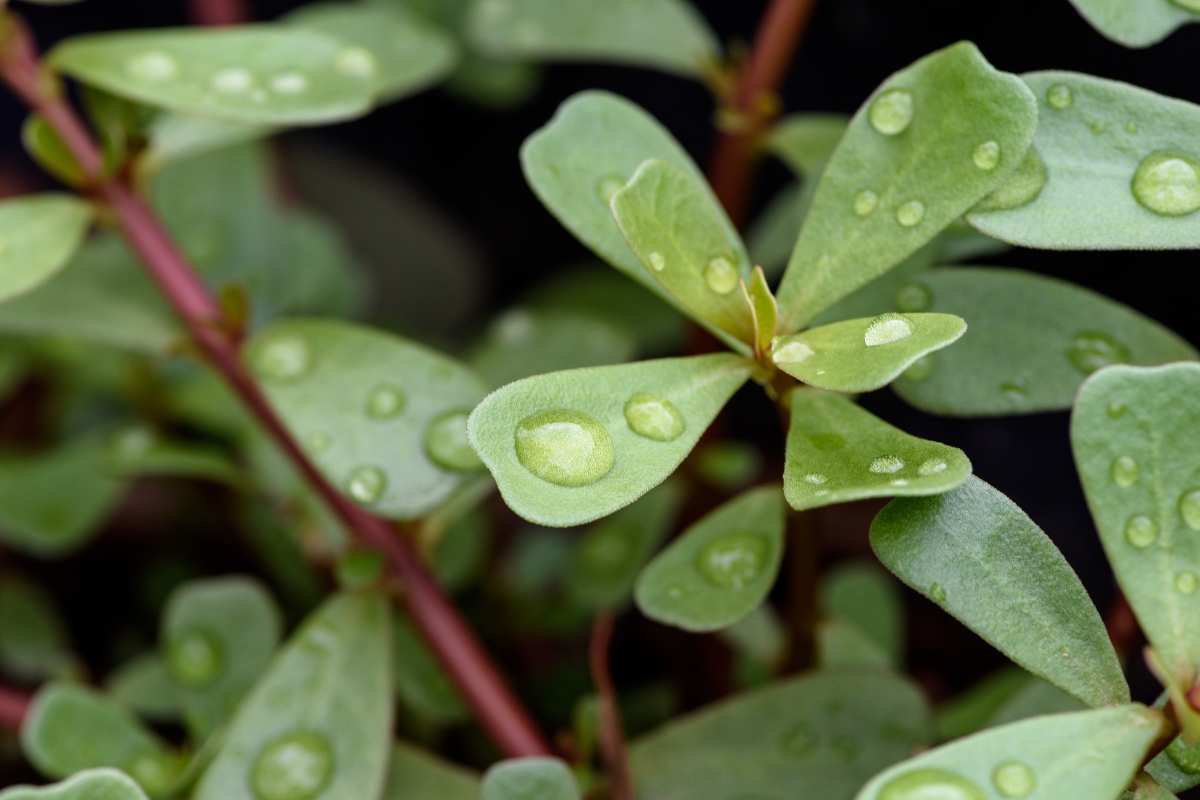
What is Purslane?
Purslane is a small annual succulent. It’s sometimes called Pursley, Little Hogweed, Fatweed, Pigweed, or Wild Portulaca. Purslane is likely native to North Africa, the Middle East, and the Indian subcontinent. It has been present in Europe since at least the 16th century.
Initially, scientists believed that European colonists introduced Purslane to the Americas, but more recent evidence found at Lake Crawford in Ontario indicates that Purslane was already present there between 1350 and 1539. There is also evidence that Native Americans were already using purslane and spreading its seeds before European contact.
Today, Purslane is incredibly widespread and can be found in Europe, Australia, the Middle East, India, and the Americas. In addition to wild Purslane, there are several ornamental cultivars available, as well as cultivated edible purslane seeds sold in garden seed catalogs.

Is Purslane Edible?
Purslane stems, leaves, flowers, and seeds are all edible and quite tasty! Purslane may be eaten raw or cooked. Worldwide, it is a popular ingredient in many dishes.
It’s also a common plant in traditional medicinal practices from various regions, including Nigeria, Greece, Sierra Leon, China, England, and North America. It can safely be used internally and externally.
In addition to culinary and medicinal uses, humans have also long grown Purslane as livestock fodder. It’s incredibly nutrient dense with high levels of Omega-3s, calcium, iron, and vitamins A and C. It’s even thought to increase the Omega-3 content in eggs when laying hens consume it.
Purslane contains oxalic acid, which helps give it its sour flavor. Due to this, people with kidney disease, frequent kidney stones, or high uric acid should avoid Purslane or talk to their doctor before consuming it.
Purslane often grows in freshly disturbed areas like gardens and waste places. When harvesting Purslane, avoid areas that may be contaminated with pesticides or other pollutants.
You can sometimes find cultivated purslane at well stocked farmer’s markets and organic groceries. The main difference here is the leaves are much bigger on cultivated varieties.

Purslane Medicinal Benefits
Some of our first written records of Purslane’s medicinal uses are from the writings of Greek physician Pedanius Dioscorides and the Roman naturalist Pliny the Elder in the first century. Dioscorides described Purslane as an astringent and recommended it for a wide variety of conditions, including inflammation, headaches, bladder disorders, dysentery, and hemorrhoids in his De Materia Medica.
Purslane has also played a large role in traditional Chinese medicine, earning itself the name “vegetable for long life.” It is used to treat eczema, fevers, diarrhea, dysentery, carbuncles, and bloody stools.
The plant sees medicinal use in Africa too. In Nigeria, it’s used as a fertility aid, as a treatment for gonorrhea in the Democratic Republic of the Congo, and to treat hernias, stop bleeding, and induce abortion in Sierra Leone.
Purslane played a role in several Indian traditions too. Some groups used the plant for treating bronchial asthma, excessive mucus, cough, indigestion, diarrhea, dysentery, hemorrhoids, ulcers, edema, and eye diseases.
In Europe, the plant was widely cultivated through the Middle Ages. Traditional Western medicine used it externally to treat eczema, rashes, burns, boils, and bug bites or as an antiseptic. It was also used internally. The aerial parts of the plant were thought to help treat muscle spasms, ulcerative colitis, eye disorders, liver problems, and edema. The seeds were used to treat arthritis, syphilis, parasites, restless sleep, warts, joint pain, dysentery, and other conditions.
We also have some records of Native American groups using Purslane for many uses, including healing burns, soothing earaches, receiving pain, and killing parasites.
Some modern studies have corroborated Purslane’s traditional uses. A 2021 study looking at the traditional management of diseases in Nigeria confirmed the use of Purslane as a good antibacterial agent.
Purslane has been widely studied as a helpful herb in treating diabetes. Some research has indicated that “[Purslane] acts on numerous pathways in the metabolic syndrome such as reduction of lipids, blood sugar, body weight, and total cholesterol.”
One 2016 study found that aerobic exercise combined with the consumption of Purslane seeds may help improve Atherosclerosis (the thickening of arteries due to plaque buildup) in women with Type 2 Diabetes.
Purslane’s anti-inflammatory properties have also been verified by some modern research. A 2009 study, found that Purslane is an effective clinical treatment for Oral Lichen Planus, an inflammatory condition that affects mucous membranes in the mouth.
A number have studies have also looked at Purslane as a treatment for various nervous system disorders, including Alzheimer’s disease, Parkinson’s disease, depression, epilepsy, anxiety, psychosis, drug dependence, hypoxia, and pain. Many of these studies have shown that “P. oleracea and its active constituents have considerable neuroregenerative, neuroprotective, and antinociceptive properties.”
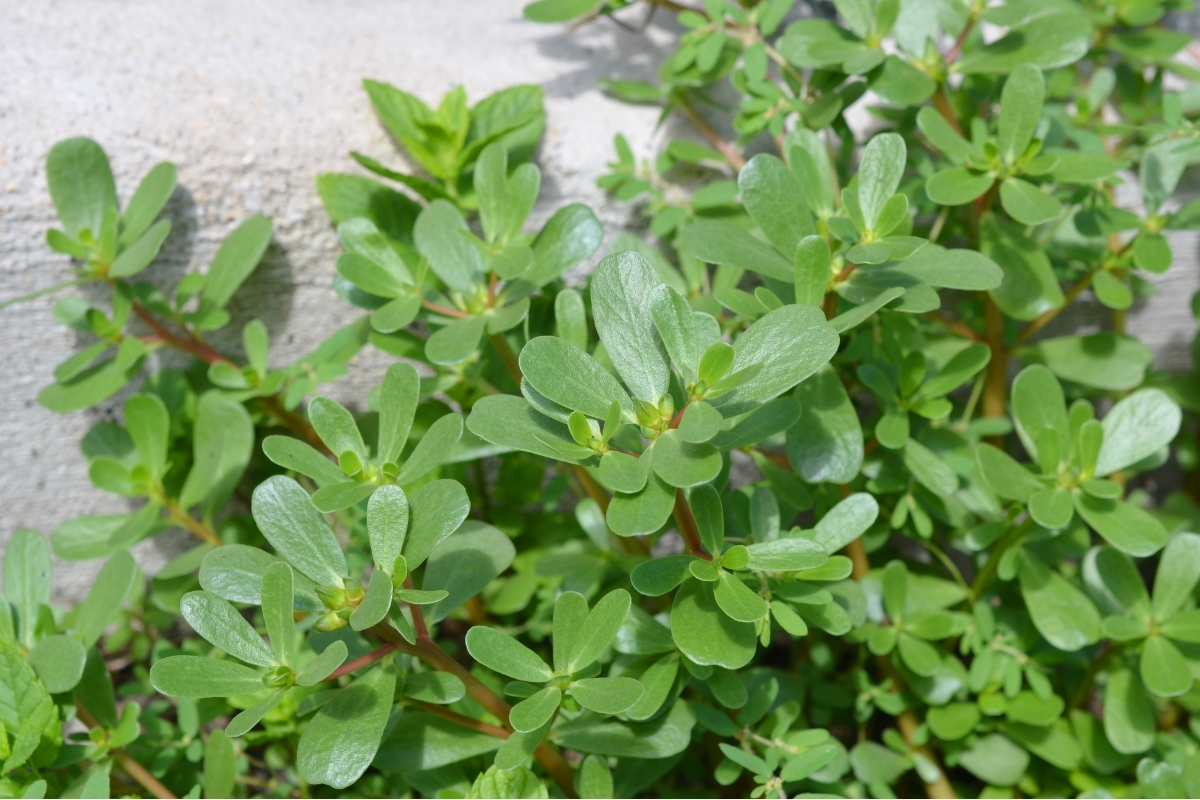
Where to Find Purslane
Purslane can be found growing in many regions worldwide. You may find Purslane in North or South America, India, Australia, and large parts of Europe, Africa, and Asia. Typically, it does best in regions with hot summers.
It generally appears in disturbed areas like waste places, gardens, yards, and roadsides. You may even spot it growing from sidewalk cracks.
Purslane is tolerant of a wide range of soil conditions, from heavy clay to high organic matter or loose sand. It will even tolerate high levels of salinity.
It thrives in full sun and warm weather. Purslane is quite drought tolerant once established but grows better with consistent, adequate moisture.
When to Find Purslane
Purslane needs hot weather to thrive. It’s unusual to see purslane germinating before soil temperatures reach 80°F. The optimum germination temperature is 86°F.
Due to this need for heat, you usually can only harvest Purslane during the warm summer months. However, in southern regions with higher temperatures, Purslane may be present in spring. Purslane is frost-tender and is usually killed off by the first fall freeze.
Identifying Purslane
Purslane is a fast-growing, creeping succulent that often forms large mats. As it loves freshly disturbed soil, you may have spotted this one growing in your garden before!
The fleshy, smooth succulent leaves and stems of this plant will help you pick it out from other weeds. During moist periods you may also spot its yellow flowers.
How tall Purslane gets is dependent on moisture availability. It may lay almost flat on the ground or grow up to 16 inches tall.
Purslane Leaves
Purslane leaves are succulent, green, and oval to spoon-shaped, have smooth edges, and broadest near their rounded tip. The fleshy succulent leaves store significant amounts of water when it’s available. They’re often 1/2 to 2 inches long and about 1/2 inch wide.
The leaves form in a primarily alternate pattern but may sometimes be opposite as well. They are clustered at the stem joints and lack petioles, being directly attached to the stem.
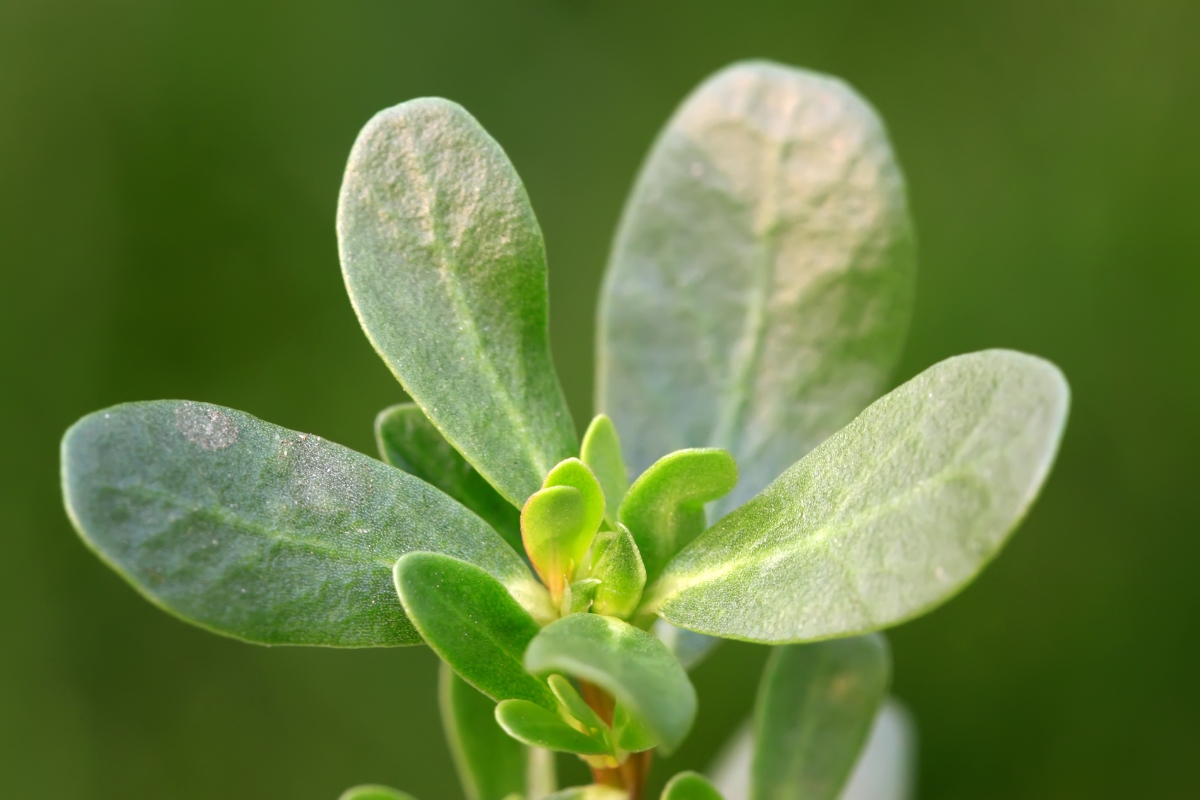
Purslane Stems
Purslane forms multiple smooth, reddish, succulent, plump, creeping stems from a single taproot. A single plant can send out stems that may be 12 inches or longer and create a mat of Purslane up to 3 feet in diameter. Purslane stems often root at the nodes.
Purslane Flowers
Purslane flowers throughout the summer whenever there is sufficient moisture. The flowers typically open in the morning on hot sunny days and remain open until early afternoon.
The yellow flowers are generally 1/4 to 1/2 inch wide and usually feature five notched petals but will occasionally have just four. They have numerous yellow stamens and pistils bunched together in the center.
Purslane flowers form singly on the tips of stems or stem joints. Each flower is in its own leaf cluster.
Ornamental cultivars often have larger and different colored flowers. For example, a popular garden mix is ‘Hot Toucan Mix’ Purslane, which features a mix of bright yellow, red, and fuchsia flowers.
Purslane Seeds
The flowers give way to small, ovoid seed capsules, which dry to brown and contain tiny black or dark brown seeds. The seeds are somewhat flattened and nearly round or kidney-shaped.
When mature, the capsules break open, releasing the seeds. The seeds can remain viable and dormant in the soil for several decades. They germinate when the ground is disturbed, and they are exposed to light.
Purslane Taproot
Purslane has a thick taproot with a secondary, large fibrous root system.
Purslane Look-Alikes
Purslane is sometimes mistaken for Prostrate Spurge (Euphorbia maculata). However, Prostrate Spurge differs in several noticeable ways:
- Prostrate Spurge has smaller, less fleshy leaves that strictly follow an alternate pattern.
- Prostrate Spurge has thin, woody stems.
- When you sever the stem of Prostrate Spurge, it exudes a white, latex sap similar to Milkweed.
- Prostrate Spurge forms tiny white flowers at the base of its leaves.
Ways to Use Purslane
Purslane is a great wild weed to know because it’s easy to find, harvest, and use.
One of the simplest ways to use Purslane is to toss the leaves, stems, and flowers into a fresh salad. The succulent leaves have a good texture and a nice, slightly sour or salty flavor. In Greece, it is sometimes served with feta, tomato, onion, garlic, oregano, and olive oil.
Purslane also lends itself to many cooked dishes and can be used as a potherb. In Turkey, it’s often baked into pastries or other cooked dishes similarly to spinach. It also makes a wonderful pickled vegetable, and this is a great way to preserve any excess. Purslane can act as a thickening agent in soups as it becomes mucilaginous when cooked.
Though they take a bit more work to harvest, Purslane seeds are also a tasty edible. Aboriginal Australians have traditionally used the seeds to make seed cakes. You can experiment with adding them to baked goods, granola, and other recipes.
You can use Purslane for internal and external medicinal applications. You can use the plant’s leaves, stems, and flowers to make tea or tincture, or just eat it raw for a boost of vitamins and Omega-3s or to help treat various conditions like diarrhea, fever, inflammation, and arthritis. Purslane is also great for external preparations like poultices and salves for treating minor burns, bug bites, eczema, and irritations.
Purslane Recipes
We often think of soups and salads when we forage for greens, but Purslane is good for so much more!
- Try something new with these delicious Purslane Pockets (Lebanese Bakleh) from Plant Based Folk.
- Have a lot of Purslane in your garden? Preserve some of the extra with this easy Pickled Purslane recipe from Homespun Seasonal Living.
- Turn your Purslane into a comforting, filling dish with this recipe for Turkish Semizotu Pilaf, a Purslane Recipe with Rice & Tomatoes from Aegean Delight.
- If you’re looking for a cooling side dish for those hot summer months that Purslane loves, try this Yoğurtlu Semizotu (Purslane With Strained Yogurt and Garlic) recipe from The Spruce Eats. It’s an excellent spread for bread or can be eaten plain.
- It’s hard not to love quesadillas. Put a wild-gathered spin on yours with this Purslane Quesadilla recipe from the Food Network.
- Dress up a simple summer salad with this Sicilian Purslane Salad recipe from Sharon Palmer.
Edible Wild Weeds
Looking for other edible wild weeds?
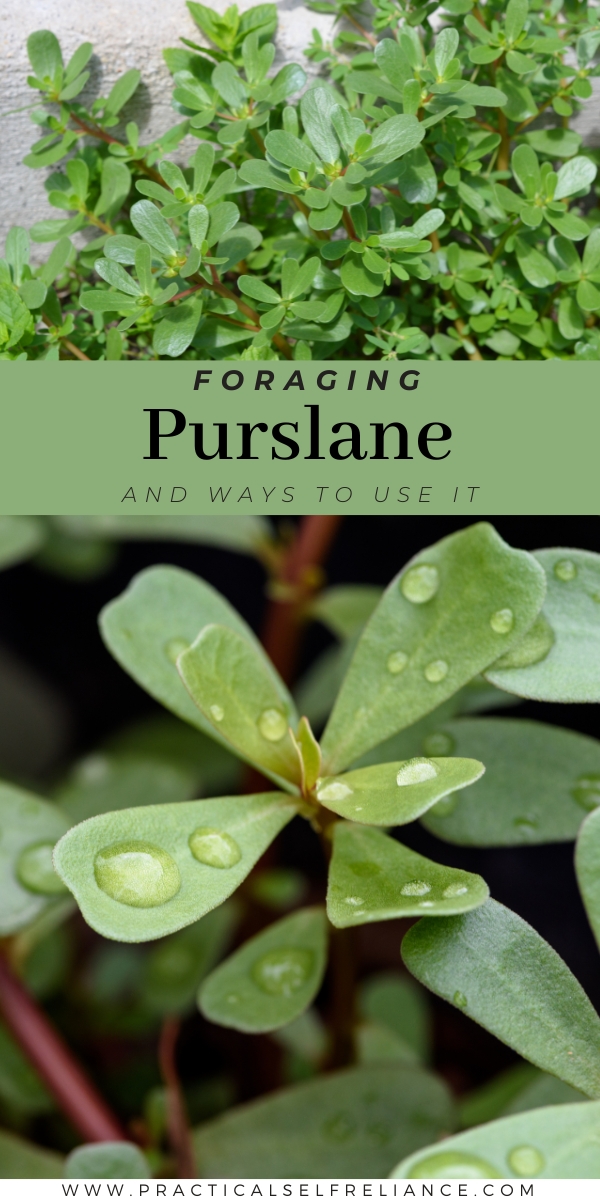

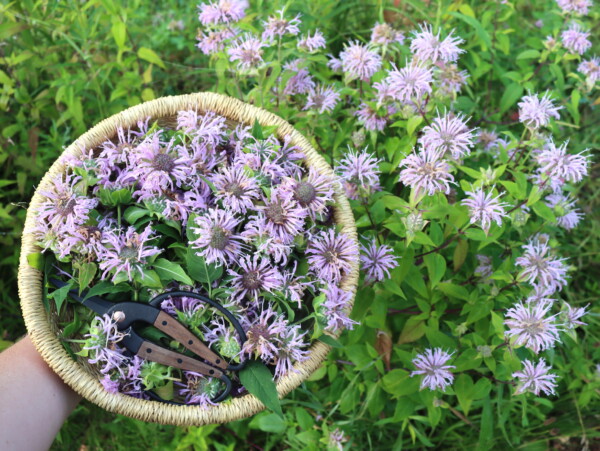
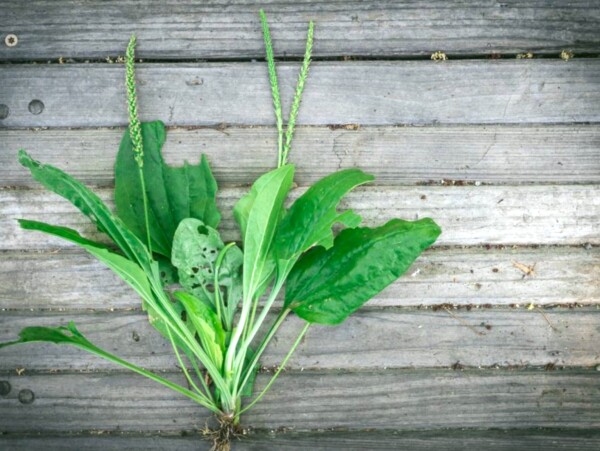
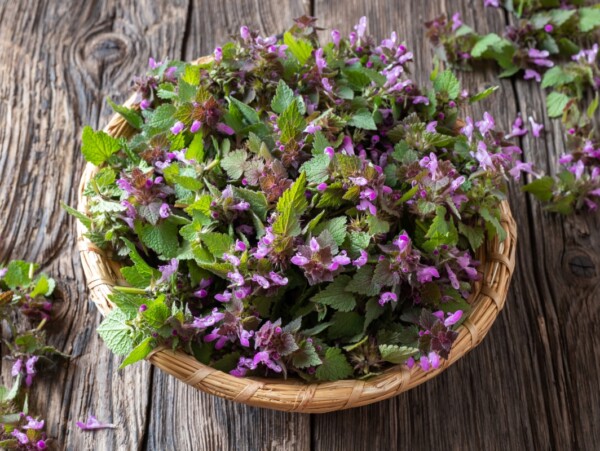










How does this get started in your garden and how can you eliminate it
Seeds from the purslane can be introduced through birds or other wild life that eat the seeds. There really isn’t any way to keep it from happening. It is very easy to pull from the soil if you want to eliminate it. It’s best to do this before it flowers or it can reseed itself.